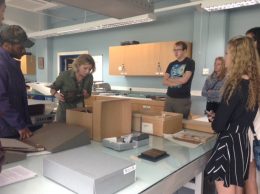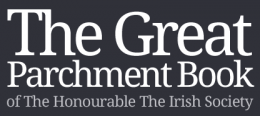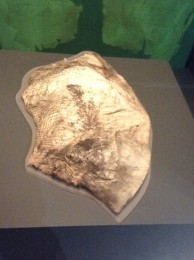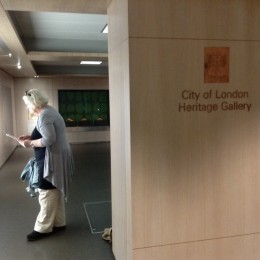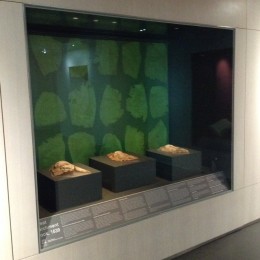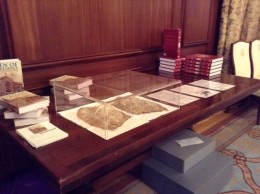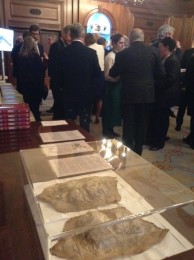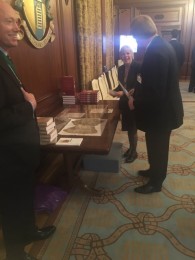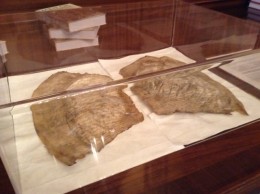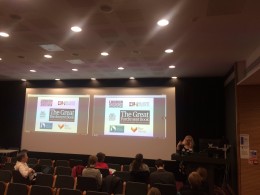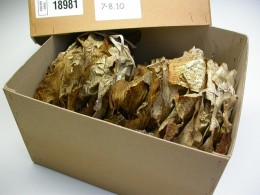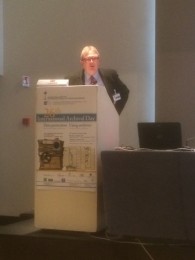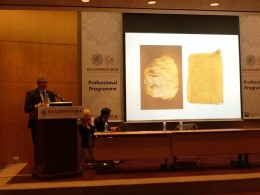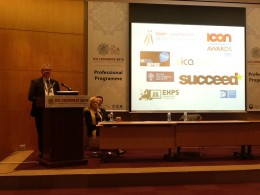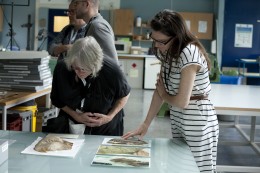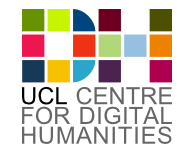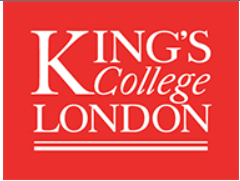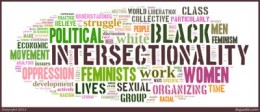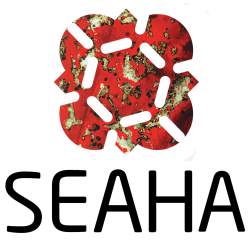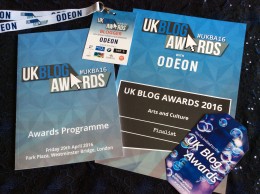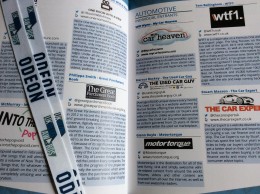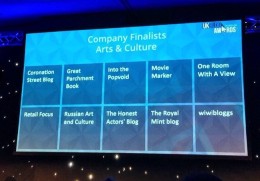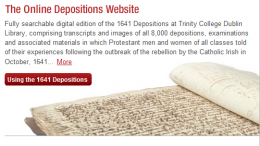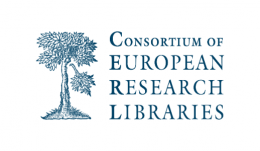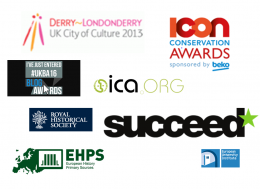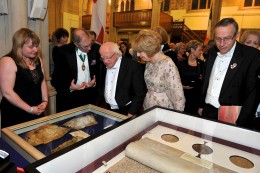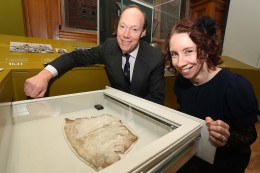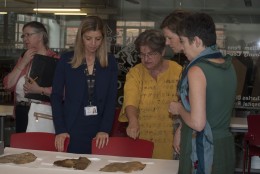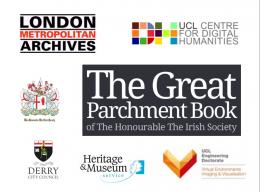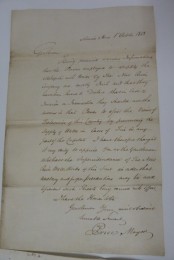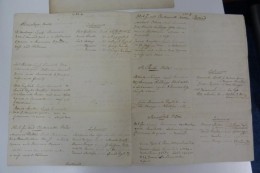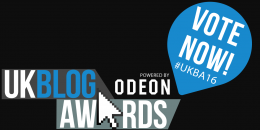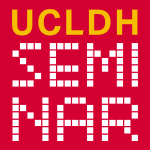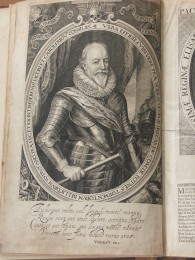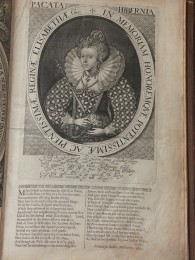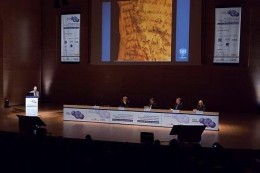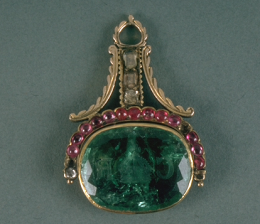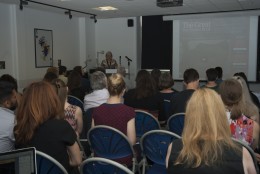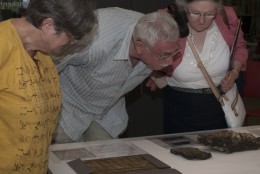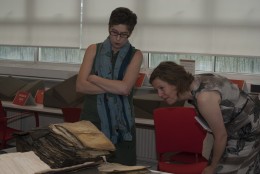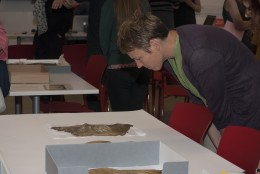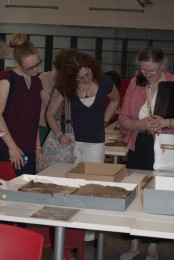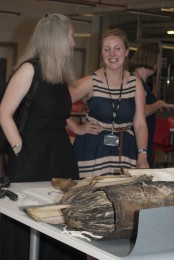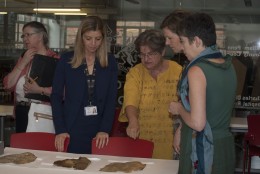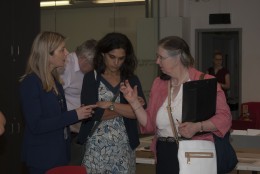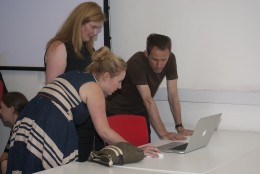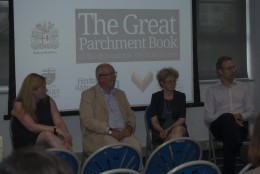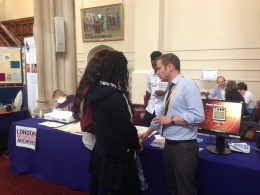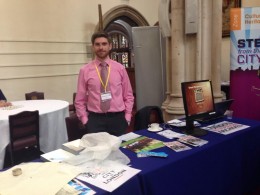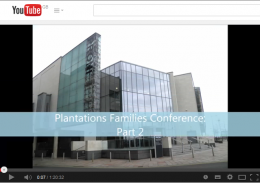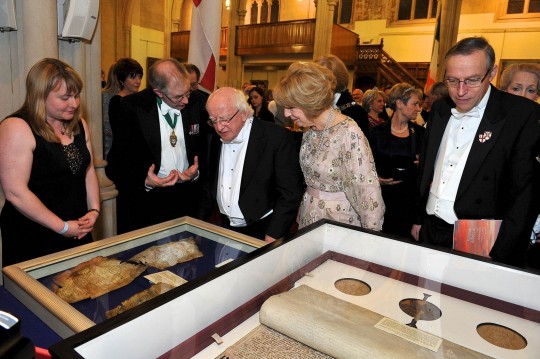We are delighted to announce that on 21 June 2016 at the UK Memory of the World awards at the Senedd in Cardiff, the Great Parchment Book of the Honourable the Irish Society was inscribed to the UK register of the UNESCO Memory of the World.
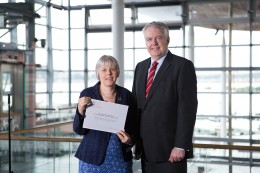
Copyright The Welsh Government
Philippa Smith, representing London Metropolitan Archives, was presented with the award certificate by Wales First Minister Carwyn Jones who gave the keynote speech. The opening speech had been given by Gary Brace from the UK National Commission to UNESCO. Chair of the UK Memory of the World Committee Elizabeth Oxborrow Cowan also spoke about the careful and skilful management needed to preserve our documentary heritage. The Chair of the All-Party Parliamentary Group on Archives and History, Chris Skidmore MP, sent a supportive message. Finally, a special award was made to George Boston and David Dawson who established the Memory of the World programme in the UK.
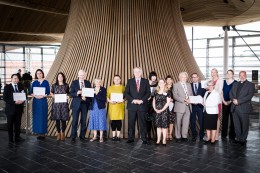
Copyright The Welsh Government
The following Inscriptions have now been added to Memory of the World (MoW) UK Register, recognising a wide variety of remarkable historical documents from across the UK, dating from the 9th to the 19th century:
- Archive of Charles Booth’s Inquiry into the Life and Labour of the People in London, 1886 – 1903
- The Great Parchment Book of The Honourable The Irish Society, 1639
- The Exeter Book, c.965 – 975
- The Laboratory Notebooks of Michael Faraday, 1820 – 1862
- Medieval Archive of Canterbury Cathedral
- Survey of the Manors of Chickhowell and Tretower, 1587
- The Correspondence Collection Robert Owen, 1821 – 1858
In addition, congratulations are also due to the Churchill Archives and the Haig Papers. These Inscriptions have been added to the International Register, which celebrates documentary heritage of outstanding international significance.
These Inscriptions reflect the diversity of the UK’s rich documentary heritage, which is filled with stories about people, places and events. Documentary heritage is the documented memory of humankind, and it deserves to be cherished, celebrated, preserved and, above all, shared.
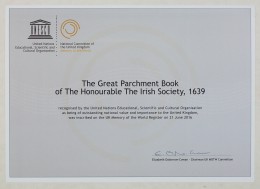 The Great Parchment Book has been recognised as a hugely significant record of the Ulster Plantation in the early 17th century, providing a unique insight into an important period of the history of Northern Ireland for which there are few other original archives surviving.
The Great Parchment Book has been recognised as a hugely significant record of the Ulster Plantation in the early 17th century, providing a unique insight into an important period of the history of Northern Ireland for which there are few other original archives surviving.
It cannot be overstated how important the Plantation of Ulster was to the history of Northern Ireland, the United Kingdom and Ireland and it still has influence today. The Great Parchment Book is central to the study of the Plantation and the social, economic, cultural, religious, and political history of Northern Ireland.
The Great Parchment Book provides a key record of the population of early 17th century Ulster at the time of the Plantation, not just the Protestant settlers who came from both England and Scotland, but also the native Irish, and exceptionally many women, at all social levels. It contains unique information about the properties and individual buildings they inhabited, as well as the extent and layout of the towns of Coleraine and Londonderry.
The Great Parchment Book has considerable significance for the people of Ulster, Northern Ireland and Ireland more generally; it is regarded as iconic by the Irish Society and the City of London.
 UNESCO established the Memory of the World (MoW) Programme in 1992. The programme vision is that the world’s documentary heritage belongs to all, should be fully preserved and protected for all and permanently accessible to all without hindrance. The UK Register (one of several country-level programmes from around the world) recognises documentary heritage deemed by a panel of experts to be of outstanding significance to the UK. The seven new inscriptions join the 50 already listed on the UK register.
UNESCO established the Memory of the World (MoW) Programme in 1992. The programme vision is that the world’s documentary heritage belongs to all, should be fully preserved and protected for all and permanently accessible to all without hindrance. The UK Register (one of several country-level programmes from around the world) recognises documentary heritage deemed by a panel of experts to be of outstanding significance to the UK. The seven new inscriptions join the 50 already listed on the UK register.
The addition of the Great Parchment Book means that London Metropolitan Archives, City of London Corporation has four items inscribed to the UK Register, the other items being the Charter of William I to the City of London, London County Council Bomb Damage Maps, and Robert Hooke’s Diary, 1672-83. This is more than any other local authority archive service and demonstrates the importance of the History of London collections held by LMA which, along with the printed collections at Guildhall Library, are also Designated as Outstanding by the Arts Council England.

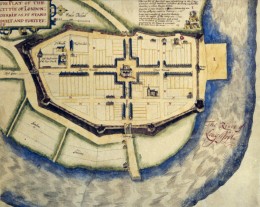
 Colleagues in France were very interested to find out more about the digital reconstruction of the Great Parchment Book and invited the project to present at a study day in Chartres on 17 November 2017 entitled
Colleagues in France were very interested to find out more about the digital reconstruction of the Great Parchment Book and invited the project to present at a study day in Chartres on 17 November 2017 entitled  The project
The project 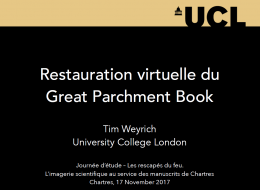 Tim Weyrich, Professor of Visual Computing and Deputy Director of the Centre for Digital Humanities (UCLDH) from project partner UCL, delivered a well-received presentation (in French!) on the Great Parchment Book at the study day. We hope that this will be available online in due course along with all the other presentations (watch this space).
Tim Weyrich, Professor of Visual Computing and Deputy Director of the Centre for Digital Humanities (UCLDH) from project partner UCL, delivered a well-received presentation (in French!) on the Great Parchment Book at the study day. We hope that this will be available online in due course along with all the other presentations (watch this space). Once again Philippa Smith and Caroline De Stefani talked about the Great Parchment Book project and the students were thrilled to see original folios of the book in a display in the Conservation Studio. Philippa and Caroline also showed the students examples of other documents where technology might not only improve accessibility, but also reveal hidden information about how the items were created and even more about former conservation treatments. LMA is currently working with UCL under the auspices of
Once again Philippa Smith and Caroline De Stefani talked about the Great Parchment Book project and the students were thrilled to see original folios of the book in a display in the Conservation Studio. Philippa and Caroline also showed the students examples of other documents where technology might not only improve accessibility, but also reveal hidden information about how the items were created and even more about former conservation treatments. LMA is currently working with UCL under the auspices of 